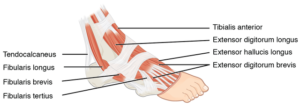The search for core balance focuses on the center of the body in the abdominals and the pelvic floor among others, but also involves work and tone in the extremities and in the case of the video above, the standing foot.
My daughter wanted to get involved when I was filming some poses about core balance while on a recent vacation in Cape Cod; and the video above which focuses on the standing foot is the result.
Uththitta Hasta Padangustasana is the name of the pose in Sanskrit and it is one of the foundations of my yoga practice that stretches the hamstring, opens the hips and strengthens the quadriceps.
Core balance is more important than strength in our book; we believe that muscle balance is the most important tool we can employ in the search for a healthy pain free body and a pain free life.
Standing balances, especially ones that bring tone and stability to the standing foot are among our favorites.
 There are four layers of muscle in the foot itself.
There are four layers of muscle in the foot itself.
Some of the most important muscles of the foot actually start in the lower leg below the knee before coming down to the foot, but there are four layers intrinsic to the foot alone.
When ever you do a standing balance the four layers of muscle in the standing foot should be active and alive, all firing in the search for balance.
The art of aging gracefully begins with balance.
If you think about older people and the end of life issues that thwart many of our elderly, balance, or a lack of balance, is often at the heart of our eventual downward spiral.
The more effort we put into working to find core balance within the body the more likely that our journey into old age will be sweeter and easier.
***
